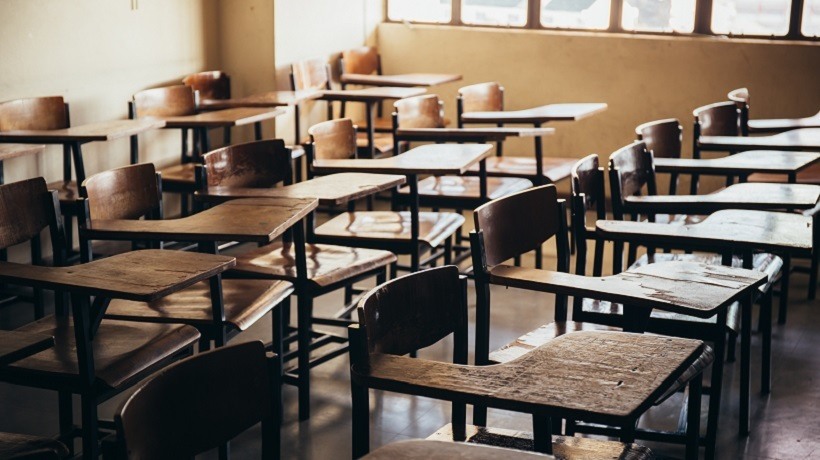Education in the U.S has always been an important part of children’s development, whether it’s social, emotional, or physical. From the ages of four to eighteen, children are given the opportunity to attend school and grow as individuals, gaining critical thinking skills, social diversity, and knowledge. One major impact that can affect a student’s education is poverty.
Poverty has been at a growing rate; according to Census.gov, 37.9 million people are in poverty across the nation. In 2022 there was 11.5% present of the United States population in poverty, and it is slowly increasing.
People who are suffering from poverty often lack the tools and basic necessities to have a successful and good quality education. Insufficient funds in schools may lead to poor quality learning tools, outdated materials, and lack of important devices such as computers and internet access. Sophomore Madison Velasquez believes that districts who have a great number of students in poverty may not have the best supplies and materials of their education.
“I feel like maybe where the students are located has a big role, because like some of the schools, maybe in the lower district dont have as great educational systems or like supplies, like the computers that we have or like the supplies we have,” Valasquez said.
Students and teens who have been facing economic problems and have been in poverty tend to be able to get jobs to help their families as much as they can, at the same time balancing school, life and friends. Junior Alison Contreras feels students who are in poverty tend to be more independent.
“The people that grew up in poverty, they work a little bit harder. There’s just a lot more responsibility that they have and I feel that they’re more independent. And I think knowing how to work and then getting what you need is way better than just getting it handed to you,” said Contreras.
Junior Jaylen Bowman gives advice from his childhood experiences to students who are currently struggling.
“I know it seems bad right now because there have been times for me where we were a little low on money, and I’m telling you it gets better eventually. And you’re eventually you’re gonna have to get a job and work for what you want. So it’s, it’s all determined on your drive. Like if you want to be in poverty, you can stay in poverty, but if you want to get out then you have to show that through your actions, getting a job helping people out stuff like that,” Bowman said.
In 1965, Congress passed an act called ‘Title 1 of the Elementary and Secondary Education Act of 1965’. This act requires federal funding and financial aid to all public schools that fall into the category of ‘Title 1’. These schools have a high percentage of students from low-income families, and their goal is to make sure that all students have an opportunity for a good quality education. History Teacher, Alexander Sandles explains how students in poverty may not have the same opportunities in ‘Title 1’ schools.
“A lot of times schools that are like ‘Title One’,don’t get the same amount of resources as schools that are more affluent. And so as a result of that, those students don’t have the same opportunities and don’t have the same chances that other students may have,” Sandals said. “Those schools usually don’t have teachers who want to teach at those schools. So these teachers that they’re getting, aren’t necessarily the best quality teachers as well. So that can have a negative impact,”
Aside from having disadvantages in the classroom, students who are in low-income families may find it difficult to participate in extracurricular activities such as sports, clubs, and competitions. Whether it’s because they can’t afford the fees or they have to work after school to help out their families, there are put at a disadvantage that tends to hold them back. Being involved in extracurriculars can open up so many doors, from building friendships, gaining college scholarships, and overall socializing with their peers. Junior Liberty King notices that her extracurricular activities don’t require spending much money.
“There are a lot of extracurricular activities that don’t require you to spend extra money like I know theater rarely ever requires us to have money. We buy a t-shirt every once in a while, we also have fundraisers to raise money for our programs, so we don’t have to spend the money on things,” King said.
In Mansfield ISD, there are 49 schools ranging from pre-kindergarten schools to career and technology academies. There are five traditional high school located in Mansfield, and the district is ranked #48 out of 1,052. There is a percentage of 8% of the population that are minors who attend high school that are under the poverty line. Sophomore Brenden Box, who grew up in Mansfield, doesn’t have the same experience as those who grew up in poverty.
“As somebody who’s never really had trouble with poverty, I don’t know how much of an opinion I can really have. Because I can’t really experience that. But I try to keep that in mind. But I’d say that it definitely makes education harder, because there are some opportunities in school that just do require some money. And you will have to, it can be difficult for those people to get all the full experience of school,” Box said.


